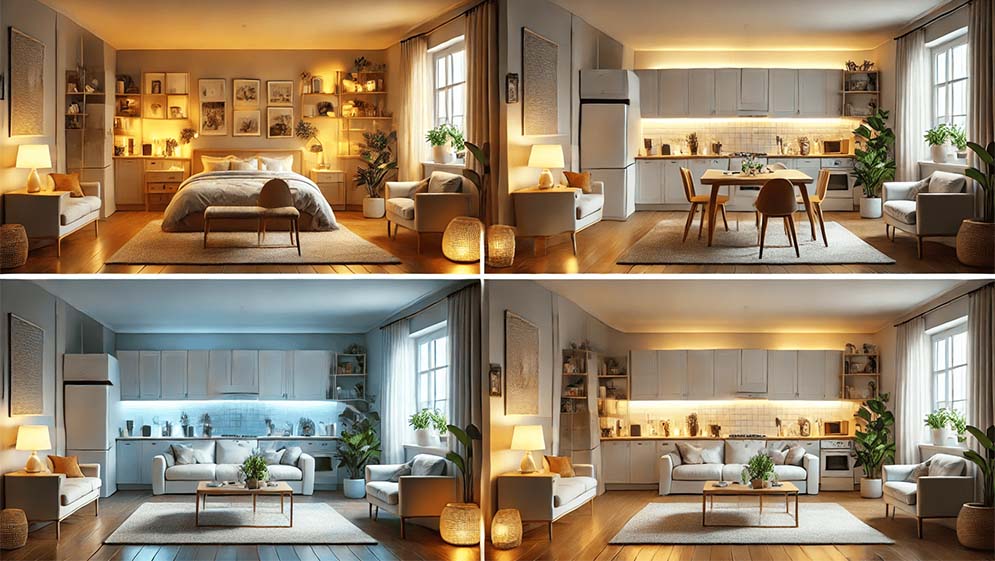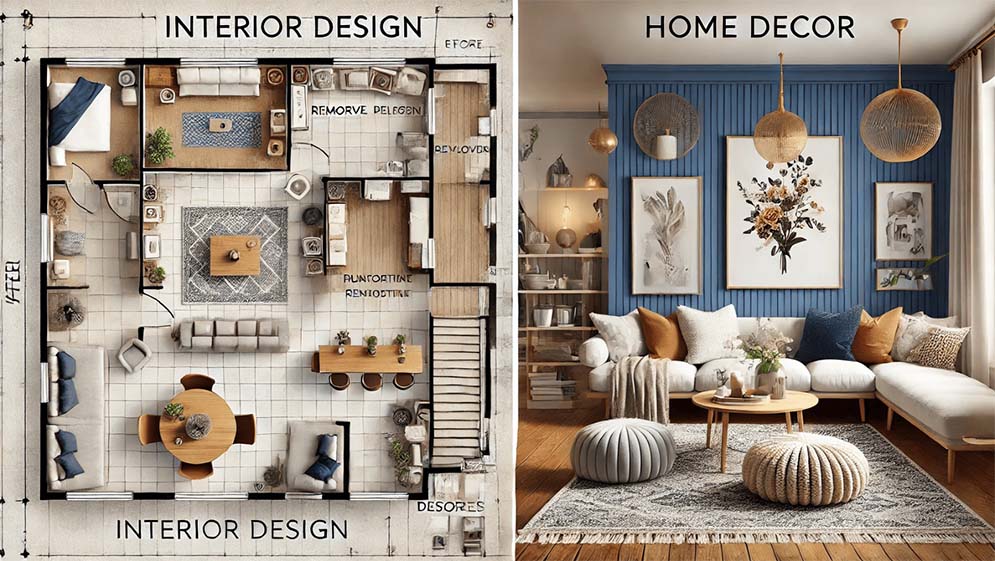Lighting is a crucial factor in determining the ambience as well as the functionality and appearance of your house. One of the biggest elements that affect the quality of lighting is the color and temperature of the bulb that you pick. Knowing how to choose the best LED bulb color could make your living space more comfortable, improving comfort, productivity as well as overall quality.

Understanding LED Light Color Temperature
Before deciding the color of LED bulbs that will work best in each space, it is important to comprehend the idea behind the concept of color temperature. The measurement of color temperature by Kelvins (K) refers to the appearance of color of the light that a bulb emits. It decides if the light is cool, warm, or neutral. LED light bulbs come with several hue options. They are classified as:
1. Warm White Light (2200K - 3000K)
This is the soft yellowish light we usually identify with incandescent bulbs. It provides a warm, welcoming, and relaxing ambience, which is ideal for bedrooms, living spaces as well as dining areas. A warm white glow is great for spaces that you need to chill or host guests in a tranquil setting.
2. Neutral White Light (3000K - 4000K)
The neutral white light is at the center of the spectrum. It gives an elegant, clear, and natural appearance. It's not the bright warmth of warm light or the bluish, harsh color from cool lighting. Neutral white works well in various spaces, including bathrooms, kitchens, and even home offices, because it has a good brightness, but isn't too bright.
3. Cool White Light (4000K - 5000K)
Cool white light has an intense, blueish color, which is commonly used in spaces that require a lot of light for work. The most common applications are kitchens, offices, as well as garages. Cool white lighting helps increase focus. This makes it the ideal option for places where focus is crucial.
4. Daylight (5000K - 6500K)
They mimic the natural light producing a radiant, clear blue-white light. They're ideal for locations in which you require clean and accurate lighting. This includes bathrooms, kitchens, or workshops. These bulbs can also be ideal for places with less sun because they create a lively and bright environment, similar to being outside.

Choosing the Right Color Temperature for Each Room
Living Room & Bedrooms (2700K – 3000K)
For spaces that are primarily for relaxation and gathering, the warm white light creates a warm and comfortable space. These colors resemble the natural light from a setting sun and encourage peace and relaxation. These colors are ideal to create a warm and cozy ambience in the bedrooms and living areas.
Kitchen & Bathrooms (3500K – 4100K)
The neutral white light provides clear and bright light, helping you perform tasks that require attention, specifics as making food or grooming. The temperature of this color enhances the visibility of your home without creating glare. making sure safety and efficiency are maintained when working in these areas.
Home Office & Study Areas (4000K – 5000K)
Cool white light stimulates attention and concentration, making it the ideal lighting choice for working environments. It helps reduce eye strain when performing long-term tasks such as working on computers or reading. In addition, it improves contrast and helps those tasks that need accuracy.
Hallways & Entryways (3000K – 4000K)
White neutral lighting provides sufficient lighting for spaces that transition but without becoming excessively harsh. This ensures visibility and safety and creates a warm atmosphere when guests enter your home.
Decorative Lighting (2200K – 2700K)
To highlight lighting, for example, under-cabinet light fixtures or other decorative lighting, warmer hues create a subtle glowing glow that highlights architectural elements as well as adds an element of class. They improve the look of your house without overwhelming other features of the design.

The Importance of Color Rendering Index (CRI)
The color temperature can significantly impact the ambience of a space however, it is the Color Rendering Index (CRI) has a significant role in the determination of how well the lighting source shows the colors. CRI determines the capability of light sources to show the true color of the objects compared with natural light. The greater the CRI, the more adept the light source is in rendering colors the way they would appear in daylight.
In most homes, the best option is to pick bulbs with a CRI of 80 or higher. But in areas that require accuracy in color, such as bathrooms and kitchens, the choice of bulbs that have a CRI of 90 or greater ensures shades are accurately reproduced and are true to life. This is crucial in tasks that require accuracy, like baking or applying makeup, since an accurate representation of colors can be a major difference.

LED Bulb Shapes and Sizes
LED bulbs are available in a variety of sizes and shapes to meet various lighting requirements and lighting fixtures. Most common shapes include A-shaped bulbs which work well to light general areas, as well as special options such as candles or globe-shaped bulbs that are ideal to be used for decoration. Certain LED come in unusual shapes, like floodlights designed for outdoor usage as well as recessed lighting designed for ceilings.
The dimension of the light bulb is also important, since small bulbs can be incorporated into smaller areas, while bigger ones give more coverage. Some LED models also come with dimmable models, allowing you to adjust the brightness. If you require strong lighting or a gentle glow, the LED has a form and size to suit every need. These LED are flexible, making them the perfect choice for commercial and residential properties.

Tips for Selecting LED Bulb Colors
Alongside the considerations for specific rooms, there are extra things to bear in mind when selecting lighting bulbs that are LED for your home.
1. Dimmability: A lot of LED bulbs are dimmed, which lets you alter the brightness according to the requirements of your home. This is especially useful for rooms such as bedrooms or living spaces where the lighting has to adjust according to the various demands. If you're looking to have more flexibility in your lighting setup, consider using dimmable bulbs.
2. Energy Efficiency: LED bulbs are renowned for their energy efficiency; they consume just a bit less power than incandescent and fluorescent bulbs. If you're thinking of LED bulbs, you should select ones that have a greater lumen output (brightness) in order to obtain the least amount of wattage. This will not only allow you to lower your electric consumption, but it can also aid in reducing the negative environmental impacts.
3. Smart Lighting Options: If you're looking to upgrade the lighting of your house, think about purchasing a smart LED bulb. They can be controlled with smartphones, or by voice assistants. The bulbs can be adjusted by users to adjust the hue and brightness of their house from an arbitrary distance. Smart lighting is a great way to provide different moods throughout the day while also synchronizing your lighting schedule to the daylight.

Conclusion
How to choose the best lighting bulb's color for LED does more than simply rely on the brightness. It plays an important part in determining the ambience and function of the space. Knowing the temperatures of lighting bulbs and their impact on the ambient can make a significant impact on how your room appears. In particular, warm tones such as soft white provide a relaxing and warm atmosphere, perfect for bedrooms or living rooms, as well as cooler hues such as daylight can be used in kitchens as well as office spaces where focus and clarity are essential.
In selecting lighting, it is essential to take into consideration aesthetic appeal as well as the practical requirements of each area. If you match the correct hue to the function of the room, it will not just increase the ambiance, but also increase effectiveness and comfort. If you're in search of an unwinding retreat or productive work space, the appropriate LED color will transform your house into a comfortable and productive setting.
FAQs
What is the difference between warm white and cool white LED bulbs?
Warm white (2700K 3000K - 2700K) bulbs produce an ethereal yellow glow and are ideal for spaces that are relaxing, such as bedrooms or living rooms. Cool white (5000K to 6500K) bulbs emit a clear and bluish glow, which makes them ideal for areas that require a lot of work, such as kitchens, offices, as well as bathrooms.
Can I use different color temperatures in different rooms of my house?
The use of different colors and temperatures for different rooms is helpful in creating the perfect ambience and also function. As an example, using cold white for your workspace as well as warmer white for areas of living enhances both the aesthetics and efficiency.
Are smart LED bulbs worth it?
Smart LED bulbs are an excellent investment for anyone who wants the flexibility of their lighting. They let you modify the brightness and color temperature of your lighting according to moods and things, all through an easy app or voice command.
What is the lifespan of an LED bulb?
LED bulbs are well-known for their long-lasting performance; they last from 15,000-50,000 hours based on the type and manufacturer. It's a lot higher than the traditional incandescent and fluorescent bulbs. This makes them an affordable option over the long term.



